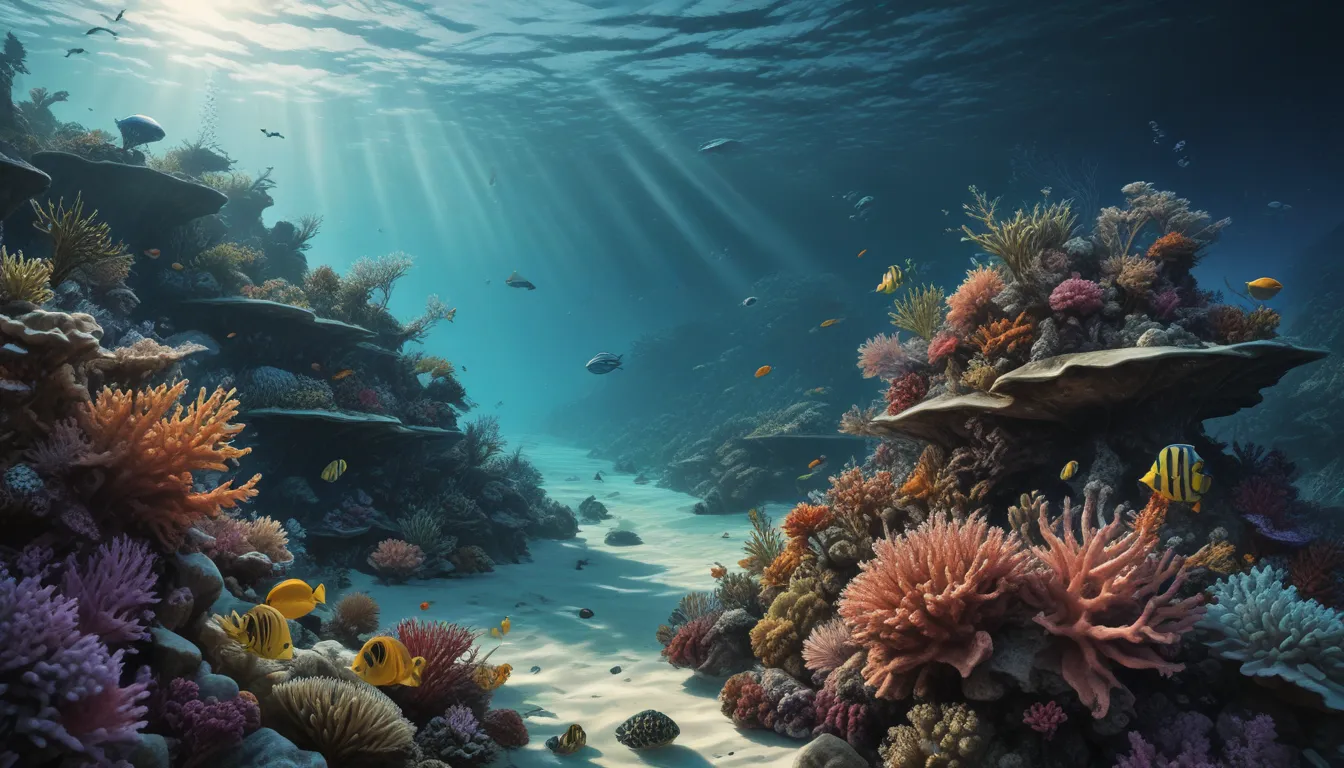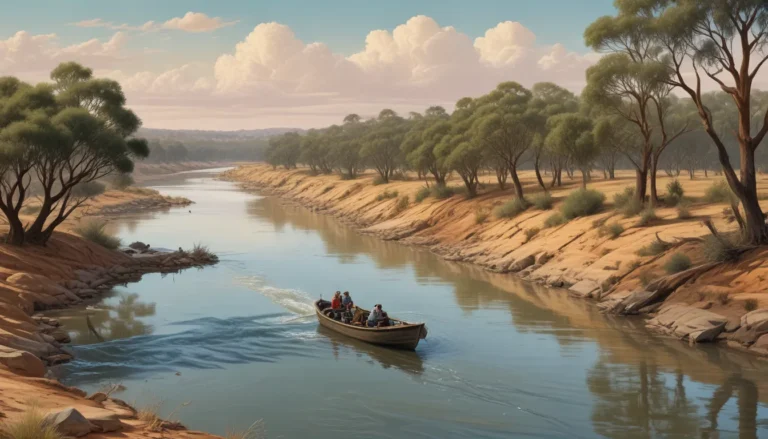The pictures we use in our articles might not show exactly what the words say. We choose these pictures to make you interested in reading more. The pictures work together with the words but don’t take their place. The words still tell you the important facts.
Welcome to the awe-inspiring world of Tubbataha Reefs Natural Park, a hidden gem nestled in the heart of the Sulu Sea in the Philippines. This UNESCO World Heritage Site is a sanctuary of beauty and diversity, boasting breathtaking coral reefs and a myriad of marine life that will leave you spellbound. Let's embark on a journey to explore nine enigmatic facts about Tubbataha Reefs Natural Park that will ignite your curiosity and deepen your appreciation for the wonders of the universe.
Discovering the Marvels of Tubbataha Reefs Natural Park
Tubbataha Reefs Natural Park is a sprawling marine sanctuary in the Philippines that beckons nature lovers and adventure seekers alike. Spanning over 97,000 hectares, this protected area is home to a diverse array of marine species, stunning coral reefs, and endangered creatures. It is not just a destination for leisure but also a place of historical significance, with shipwrecks dating back to the Spanish era and attracting researchers and birdwatchers. The park's commitment to sustainable tourism ensures the preservation of its delicate ecosystem for future generations to enjoy.
The Magnificence of Tubbataha Reefs
Dive into the crystal-clear waters of Tubbataha Reefs Natural Park and be mesmerized by its stunning coral reefs. With over 360 coral species creating a vibrant underwater tapestry, snorkelers and divers are treated to a spectacle of colors and shapes that defy imagination. The kaleidoscope of marine life that inhabits these reefs, from playful sea turtles to elegant manta rays, promises an unforgettable underwater experience like no other.
A Sanctuary for Endangered Species
Tubbataha Reefs Natural Park serves as a vital refuge for endangered marine species, including the critically endangered hawksbill and green turtles. The park is also a haven for various shark species, such as tiger sharks, hammerhead sharks, and whale sharks, adding to its rich biodiversity. By providing a safe haven for these vulnerable creatures, Tubbataha Reefs Natural Park plays a crucial role in conservation efforts and marine protection.
Embracing Nature’s Harmony
Beyond its underwater wonders, Tubbataha Reefs Natural Park is a haven for birdwatchers, attracting avian enthusiasts from around the globe. With over 100 species of birds calling the park home, including the majestic brown booby and the graceful black-naped tern, birdwatchers can revel in the beauty of these feathered creatures in their natural habitat. The park's diverse ecosystem extends beyond the ocean depths to the skies above, creating a harmonious symphony of nature's beauty.
Delving into History Beneath the Waves
The legendary reefs of Tubbataha Reefs Natural Park are not only a haven for marine life but also hold a rich historical significance. Steeped in maritime history, these reefs have served as vital navigation points and sources of sustenance for sailors and fishermen for centuries. The remnants of shipwrecks dating back to the Spanish era lie beneath the waves, offering a glimpse into the past and enriching the park's cultural heritage.
A Researcher’s Paradise
Tubbataha Reefs Natural Park is a playground for scientists and researchers seeking to unravel the mysteries of its marine biodiversity. By studying the park's coral reefs, marine species, and the effects of climate change, researchers contribute valuable data to conservation efforts. Their findings help shape strategies for the protection and preservation of this precious underwater ecosystem, ensuring its survival for generations to come.
A Sustainable OASIS
In a world where conservation is paramount, Tubbataha Reefs Natural Park stands as a shining example of sustainable tourism. By regulating visitor numbers and implementing strict guidelines to minimize environmental impact, the park maintains a delicate balance between exploration and preservation. This approach not only allows visitors to appreciate the park's natural beauty but also ensures its long-term survival for future generations to enjoy.
Embarking on an Unforgettable Journey
As you prepare to explore the wonders of Tubbataha Reefs Natural Park, remember that your journey is not just about discovering nature's marvels but also about preserving its splendor for generations to come. By supporting responsible tourism, spreading awareness about the park's importance, and contributing to conservation initiatives, you play a vital role in safeguarding this marine paradise. So pack your bags, dive into the mystique of Tubbataha, and embark on an unforgettable adventure into the heart of this enigmatic marine wonderland.
FAQs: Navigating Your Tubbataha Adventure
- How do I get to Tubbataha Reefs Natural Park?
-
Reach Tubbataha by joining a liveaboard trip departing from Puerto Princesa in Palawan, offering an immersive experience of the park's beauty and biodiversity.
-
When is the best time to visit Tubbataha Reefs Natural Park?
-
The ideal time to visit Tubbataha is during the summer months from March to June when the sea is calm and visibility is optimal for diving and snorkeling.
-
Can I visit Tubbataha Reefs Natural Park on a day trip?
-
No, day trips are not permitted in Tubbataha Reefs Natural Park due to its remote location and conservation efforts, accessible only through multi-day liveaboard trips.
-
Are accommodations available in Tubbataha Reefs Natural Park?
-
Accommodations are not present within the park; overnight stays are on liveaboard dive boats equipped with all necessary amenities for guests.
-
Is Tubbataha Reefs Natural Park safe for diving and snorkeling?
-
Yes, Tubbataha is generally considered safe for diving and snorkeling, but it is crucial to adhere to park rules and proper diving practices for a safe and enjoyable experience.
-
Can I see sharks in Tubbataha Reefs Natural Park?
-
Yes, Tubbataha is home to diverse shark species like scalloped hammerhead sharks, whitetip reef sharks, and tiger sharks, offering encounters with these fascinating creatures.
-
Are there any restrictions for visiting Tubbataha Reefs Natural Park?
-
Yes, visitors must adhere to park regulations, obtain permits, and avoid activities that could harm the marine ecosystem to ensure the preservation of the park.
-
Can I fish or collect souvenirs in Tubbataha Reefs Natural Park?
-
Fishing and souvenir collection are strictly prohibited in Tubbataha Reefs Natural Park as it is a protected area, safeguarding its natural resources.
-
How can I support the conservation efforts of Tubbataha Reefs Natural Park?
- Show your support for the conservation of Tubbataha by practicing responsible tourism, raising awareness about the park's significance, and contributing to conservation initiatives.
Embark on a journey into the enthralling world of Tubbataha Reefs Natural Park, where nature's wonders await to be discovered and cherished. Dive into the depths of its captivating marine life, uncover the mysteries of its historical legacy, and revel in the beauty of its vibrant coral reefs. Let the magic of Tubbataha capture your heart and soul as you embrace the essence of this enigmatic marine paradise. Explore, learn, and protect this precious gem of nature for the generations yet to come.






